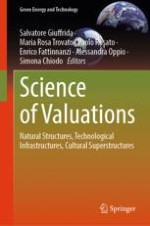This volume collects the best papers presented at the 2019 Conference SIEV (Italian Society of Appraisal and Valuation) on the Science of Evaluation foundations, actuality, and prospects. The book consists of twenty-six papers and is organized into four parts: the first one collects reflections on the nature of the value judgement, on the truth of the evaluative statement, and on the authenticity its contents, the values; the next three present operational experiences in the three fields of natural, urban and cultural heritage where the knowledge of the value of the human space, supports decisions and policies, highlighting feature concerning: value and valuations in the dialectic between earth and the city; the value bearers between heuristic and normatively; the role of valuation for the complementarity of rules and creativity.
The book is being published in the midst of the new radical transformations of the equilibrium between social system and environment generated by the serious and unexpected crises of the third decade of this century. Reflections on the reality that fills evaluative statement with truth – the reality of values – is more topical than ever in a historic phase in which the role of democracies and the destiny of civil coexistence is called into question, claiming the order of unamendable values like truth, justice and beauty.
The book brings together experiences that focus on the “intentional evaluative consciousness” as a condition for the responsibility of the subject - individual and collective - concerning the saliences and urgencies most significantly contributing to the formation of orderly communities.
